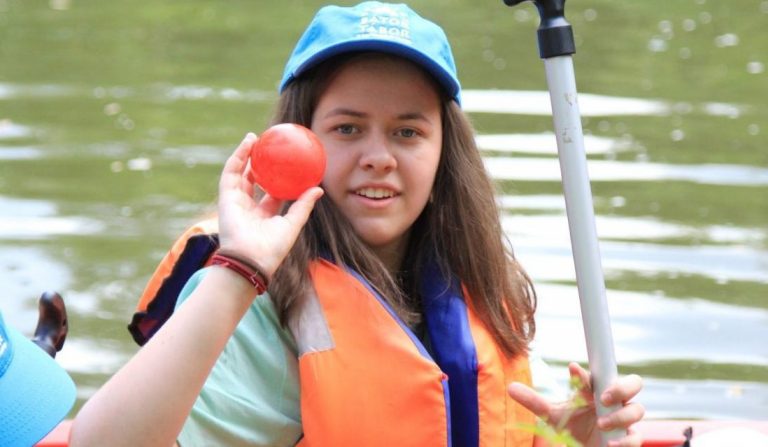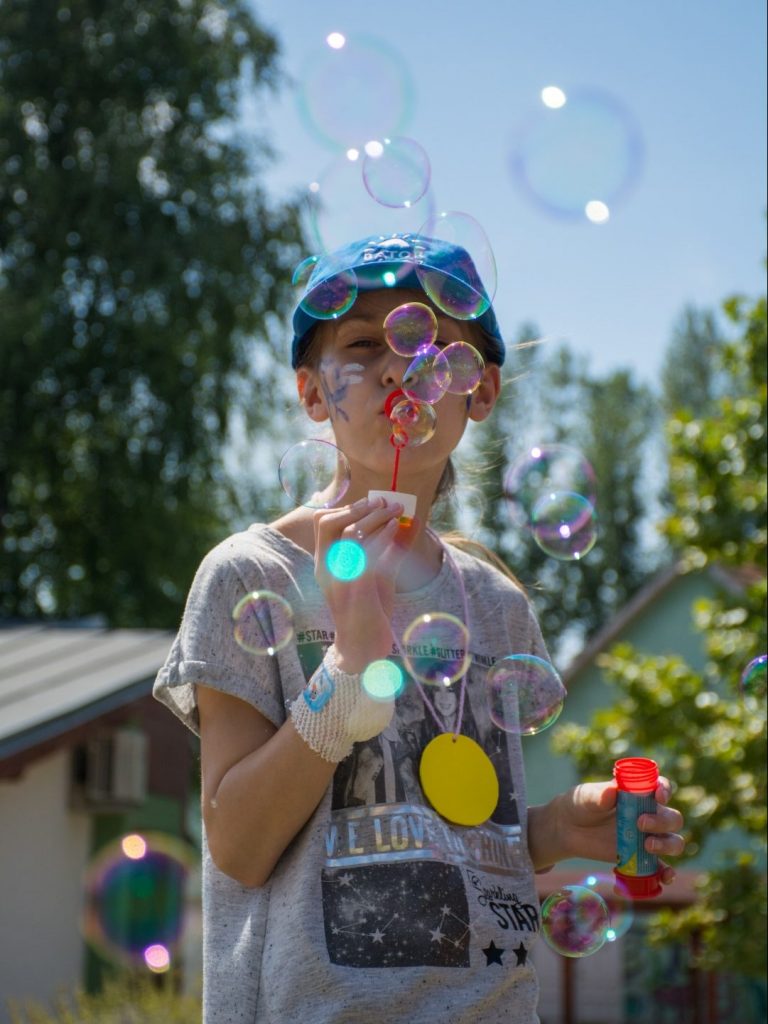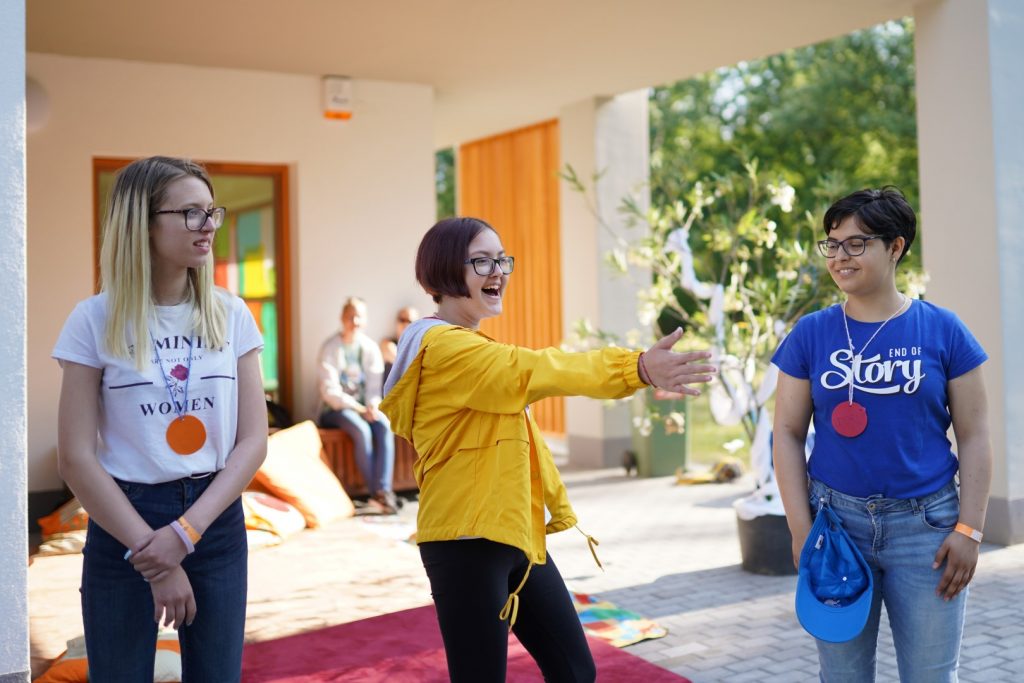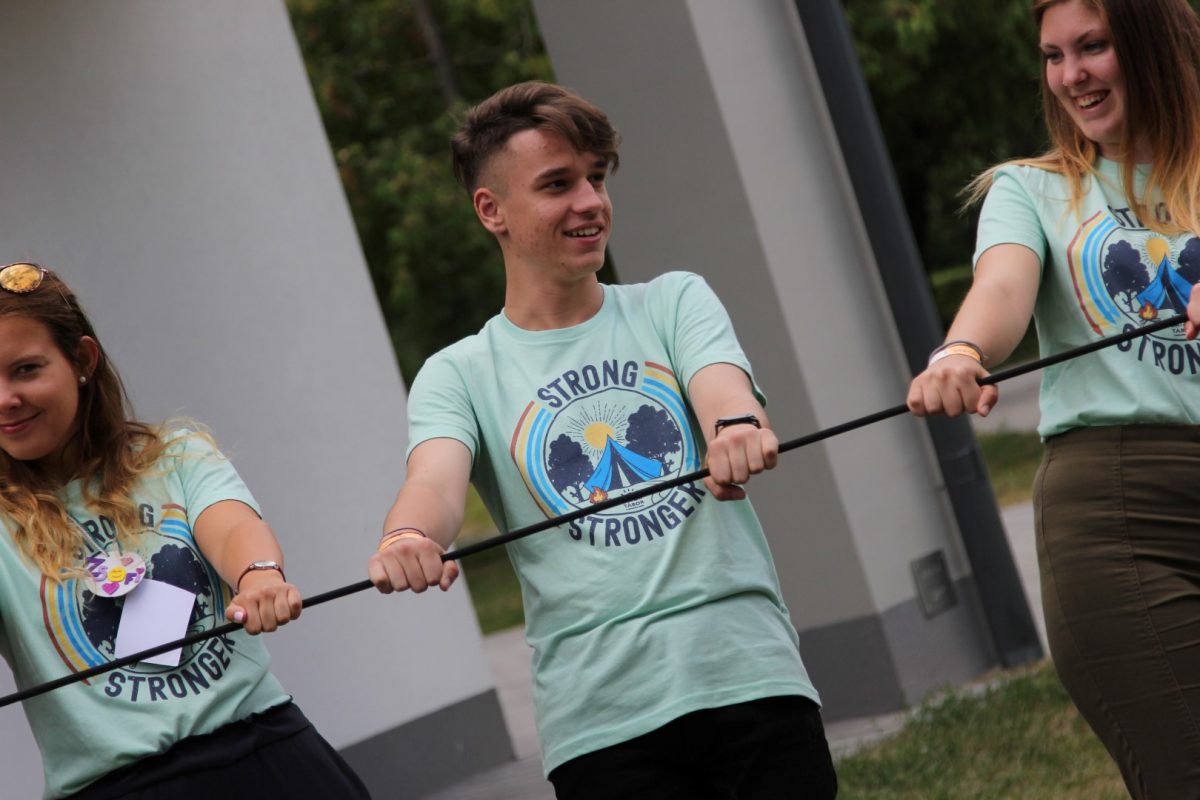We recommend these games to larger teams and classes. Difficulty levels and variations can be unlimited, so they provide excellent entertainment for children, adolescents, and adults.
Two balls
The following game that develops concentration skills may be just perfect for energising the group. Stand in a circle and take two balls. One should go hand in hand around the circle, and throw the other to each other. Don’t let the balls fall on the floor.

Drawing in a team, from memory
Place a picture away from the team (or not too far, make sure it is covered with something). One player from the team should go there to look at it for a glance. Then return to the others, and based on his description the team tries to draw the picture as precisely as possible.
Then the next player can go to the picture, and based on his observations, he will add more details to the team’s drawing. Everyone can go out to see the picture only once, and anyone who has already seen it is not allowed to draw. At the end of the game, compare the original artwork to the one you have created with your team.
Variations, levelling:
Each player can only say one sentence when it’s their turn.
Players can only act out, and they are not allowed to talk.
The first player can talk, the second can only act out, and the third can only talk again and so on.
Human bingo
Human bingo is ideal for getting to know each other a little deeper. Fill up the bingo chart with different statements, for example, “I like climbing trees.” “I learn to play the piano.” “My favourite bird is the blackbird.” Then everyone gets a bingo chart and a pen.
Find all the people in the team whose statements there are on the bingo chart. If a statement is true for you, sign the appropriate section of the table. You can sign only one statement on a chart and not more.
30 seconds
When kids are writing a test, it is very important for them to use the given time well. We recommend the following quick game to improve this skill during breaks or while you are waiting for the bus on a school trip.
Stand in a circle and set a stopwatch or clock for 30 seconds. Ask the team to sit or squat when they think the 30 seconds have passed. When 30 seconds have really passed, tell them and discuss together how they felt when they were trying to sense how long half a minute can be. You can try it with your eyes closed.

Snowball
This alternative snowball is a great energiser and at the same time helps to get to know each other whether on a team-building or during a cosy class Christmas!
Each player gets 3 stripes of paper on which they need to write 3 true statements about themselves. Then you all make a small ball shape out of the stripes, and you can then start the snowballing – that is, careful throwing of the paper balls to each other. The point is to mix the paper balls well, and end up with 3 new snowballs.
Go around and by asking questions from each other, try to find out whose paper you are holding in your hands. You can ask any questions, but make sure it is comfortable for the respondent, as well.
The game ends when everyone has found the owners of all the three snowballs they have. Then you sit back in the circle and tell what you have learned about each other.
Frogs
Stand or sit in a circle and choose a detective to leave for a while – or if you’re playing outdoors, go a little further.
Make sure that the detective does not hear you, choose one frog from among you and the others will be flies. The detective goes to the middle of the circle. Participants begin to give the buzzing sound of a fly: bzzzzzz.
The frog starts to catch them by looking at someone, keeping the eye contact, and sticking out his tongue. The fly caught by the frog stops buzzing. The detective’s job is to figure out who the frog is.

Variation, levelling:
The detective has only three guesses.
If the detective has not found the frog for the third guess, reveal who has played the frog and start a new round.
President-Secretary
Sit in a big circle. To begin with, you will be the President and the player to your left, the Secretary. Whoever sits to his left will be the No. 1 player, the No. 2 next to him, and so on. However, the numbers do not represent the players themselves, but rather the seats: if someone sits in the place of player number 4 later on, he will be the number 4.
As the next step, everybody should learn and follow the rhythm exercise below:
- players hit both thighs simultaneously with both palms;
- then clap one,
- then point over your shoulder behind your back first with the right hand thumb,
- and then with your left hand thumb.
Keep repeating the sequence of movements, practicing slowly first and once it goes well, the game can begin. You have to keep this rhythm throughout the whole game.
The President begins each round. Together with the others based on the rhythm already practiced
- he hits his thigh with both hands,
- clap,
- and when he points with his right thumb behind his back, he says his own name (PRESIDENT)
- and when he points backwards with his left thumb, he says the name of any player he chooses (FIVE)
Participant No.5, without falling out of the common rhythm, hits his thigh together with the others, claps, says his own name (FIVE) on his right thumb, and the number of another teammate on his left thumb. This is how it goes until someone makes a mistake.
If someone messes it up (for example, falls out of the rhythm, says a number that isn’t in the game, or doesn’t say his/her own number at the right hand, and so on), s/he takes the last place and number in the circle, to the right of the president. For example, if there are 16 participants playing, including a secretary and a president, the number of the last player is 14. Whoever fails to follow the proper sequence, will take the place of player No.14 by taking over his number. Player number 14 sits on the seat taken by player number 13 and it goes like this all the way in the circle.

The detective and the signs
Sit around in a circle! Each player chooses a sign, a hand gesture, for example, he pretends to adjusting his glasses on his nose, or smooth his hair back. This sign can be anything, but it should be neither too unrealisable (for example, a wink) nor too eye-catching.
Repeat everyone’s move in the circle to memorize them. Someone stands in the middle and closes his eyes, he will be the detective. Those sitting in a circle silently agree on who will start the game. Players pass each other’s signs and pay attention that the detective does not notice where the sign is. The sign handover happens like this: a player shows his own sign and also someone else’s sing. The one who is “addressed” with this, also shows his own sign first, then someone else’s gesture and the game goes on this way.
The detective needs to find the sign giver in action? If someone has not yet accepted the addressed sign yet, s/he is protected from being caught. You can also wait between receiving and passing the sign on for tactical reasons. If someone is caught by the detective (you can suspect anyone at any time), that player stands in the middle.
